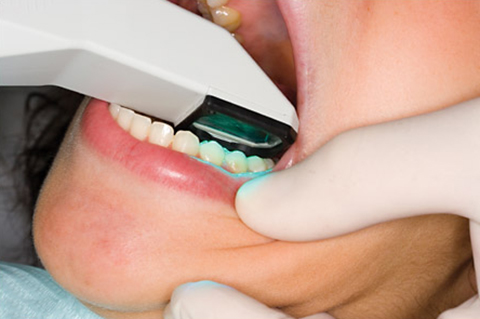The days of the goopy mouth impressions have ended at Smile Frederick Orthodontics.
The office has been making 3D printing molds of patients’ mouths, using a system where staff uses a camera that scans and takes segmental pictures of the inside of mouths. These images are sent to a lab, which produces a model of a patient’s teeth.
Dr. Rob Mansman, a pediatric dentist and the owner of Smile, said he has had a high population of special needs patients since he opened his office in September 2013. He said they often have tactile and sensory issues so it’s helpful for these patients to get dental impressions using something that isn’t touching their mouth for long periods of time.
The system he uses is called iTero, which has been around for about five years. He said it tends to be pretty cost prohibitive with one machine running about $20,000 to $30,000. Mansman uses it on all patients.
“The accuracy is pretty precise,” he said. “It’s much less messy and it’s much more comfortable.”
It’s also popular with adults who don’t want to deal with getting dental impression clay all over themselves before having to go to work, Mansman said.
The machine is radiation-free and works more like a camera than an X-ray machine, he said. Another plus is that it can easily be removed from a patient’s mouth if the patient has to do something like cough or go to the bathroom.
“Whereas with an impression if you stop, you have to start all over,” he said, adding that the gag reflex is also reduced.
The small camera goes into the teeth and gum area but it does not directly touch the mouth, Mansman said. The process does tend to take a little longer than traditional impressions, but he said the comfort and accuracy makes it worth it. With clay impressions, Mansman said dentists also have to deal with possible shrinkage or expansion.
His office currently has two portable machines.
“Patients and parents love it,” he said.
One of these parents is Sharon Buntman of Monrovia who takes her 9-year-old daughter, Alicia, to Smile. Alicia has Rett syndrome, which Buntman described as a genetic mutation on her X chromosome. She said her daughter is non-verbal and her body does not know how to respond to her intelligence, causing her not to be able to be still for longer than a second or two.
Alicia’s dental needs include a severe cross-bite and teeth grinding throughout the day. If she had a traditional dental mold, Buntman said she would probably swallow it, gag or be unable to keep it inside her mouth.
The system Mansman uses works well for Alicia because the staff can keep her still for a few seconds, long enough to do the mouth scans.
“It wasn’t easy, but it was doable,” Buntman said. “She constantly moves.”
She has seen special needs parents come from out of state to see Mansman because of the technology.
“I think she has a little crush on him,” Buntman said of her daughter. “They’re very, very good with her.”

